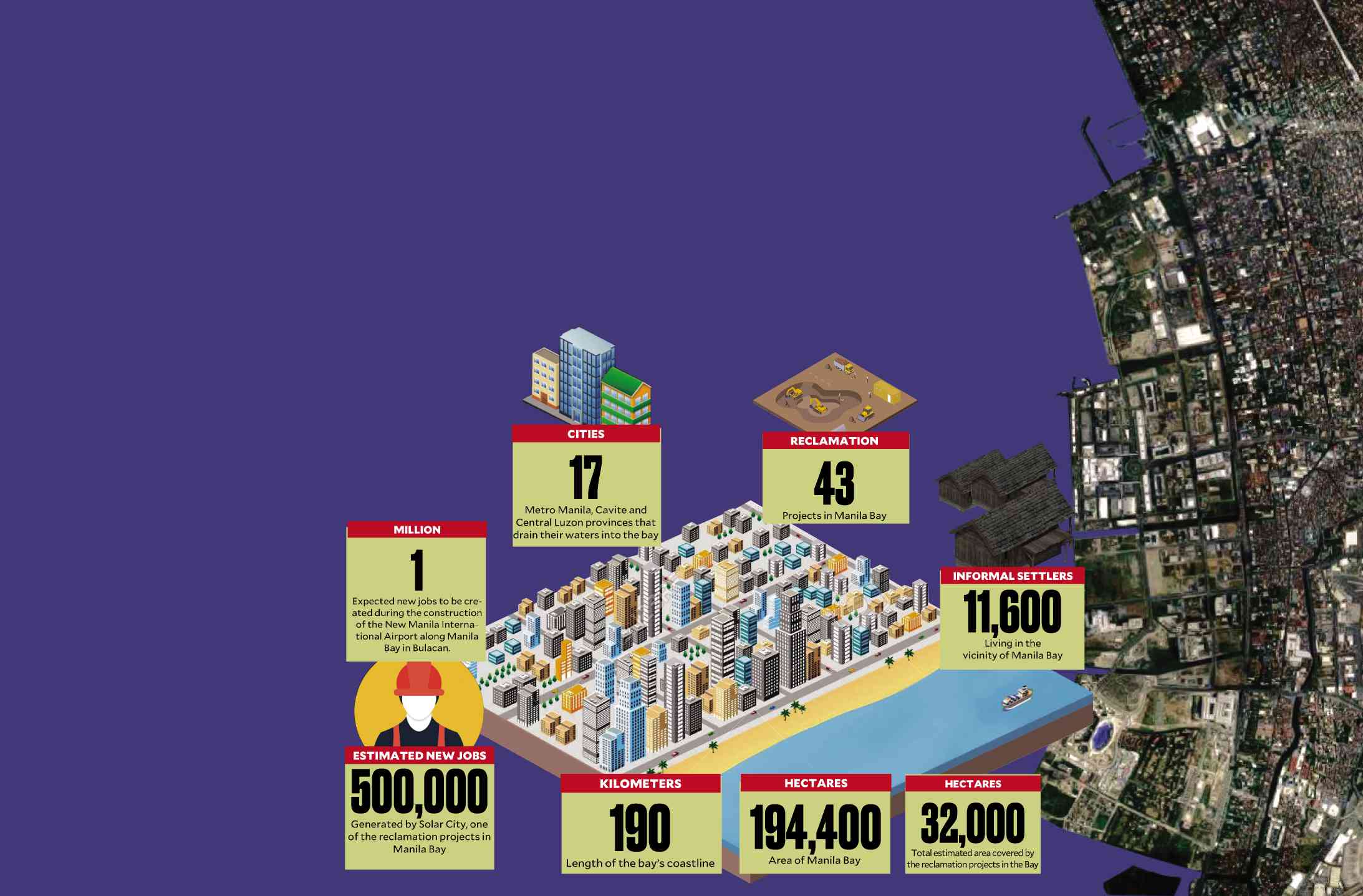The iconic Manila Bay has found itself, again, at the center of many heated discussions in recent months.
Reportedly at stake are 43 reclamation projects covering some 32,000 ha in Manila Bay, which has a 190-kilometer coastline running through several Metro Manila cities and nearby provinces.
If these push through, hundreds of billions of pesos are expected to be invested, while thousands of fresh jobs are seen to be generated. Add to that the additional taxes to be paid to both the local and national governments.
Why the clamor
But there is a resounding clamor to put these reclamation projects on the back burner, coming mostly from civil society groups, environmentalists and other critics who have condemned these projects.
Just last Thursday, members of the House Makabayan opposition bloc filed House Bill No. 9067, which seeks to declare the waters of Manila Bay Area as a “reclamation-free zone.”
Earlier, Pamalakaya national chair Fernando Hicap also expressed opposition to these reclamation projects, which he said would displace thousands of families in coastal communities. Others further claimed that the projects would likewise destroy the coastal ecosystem.
Much furor was further raised when President Duterte issued on Feb. 1 Executive Order No. 74. The said EO gave the Office of the President control and supervision of the Philippine Reclamation Authority (PRA), which has jurisdiction over 43 reclamation projects in Manila Bay alone.
The EO further delegated the power of the president to approve reclamation projects to the PRA governing board.
EO 74 repealed directives that placed the PRA under the Department of Environment and Natural Resources (DENR). Also repealed was the power of the National Economic and Development Authority (Neda) to approve reclamation projects.
The said directive likewise stressed the government goal “to increase competitiveness, promote ease of doing business, and rationalize and streamline functions of agencies to facilitate efficient delivery of government services.”
Slammed the transfer
However, the Pambansang Lakas ng Kilusang Mamamalakaya ng Pilipinas (Pamalakaya) slammed the transfer, noting that the “newly signed executive order will hasten not only the approval of reclamation projects in Manila Bay and throughout the archipelago, but as well as the destruction of marine environment and displacement of fishing communities.”
The alliance of fisherfolk said the transfer likewise raised doubts about the real score in the government campaign to rehabilitate Manila Bay, an Inquirer report stated.
The Kalikasan People’s Network for the Environment meanwhile pointed out that apart from displacement, the reclamation projects are expected to lead to the clearing of hundreds of mangrove trees, which serve as habitat for fish and crustaceans that are food for migratory birds and humans.
LGU cooperation
Despite these protests, the local governments of Manila and Pasay have already signed a memorandum of agreement (MOA) to cooperate and extend assistance to the proposed reclamation projects of three private groups in Manila Bay. Projects are said to benefit the two premier coastal cities.
The MOA was signed in November 2018 by Manila Mayor Joseph Estrada, and Pasay City Mayor Antonino Calixto, along with representatives from the three reclamation project proponents, namely Manila Goldcoast Development Corp., SM Prime Holdings Inc. and the Pasay Harbor City consortium.
The projects include the MGDC’s 148-ha reclamation project involving the southern parcel of the Manila-Cavite Coastal Road and Reclamation Project-North Sector, or the Solar City project; the SM Prime Holdings’ 300-ha and 60-ha projects, or the SM project; and Pasay Harbor City consortium’s 265-ha reclamation project, or the Pasay Harbor City project.
Meanwhile, among the proposed reclamation projects in Manila Bay as listed by Pamalakaya and which were approved by the PRA include:
P700-billion New Manila International Airport, an aerotropolis in Bulacan (3,668 ha)
P399.7-billion Manila Bay Integrated Flood Control Coastal Defense and Expressway (18 ha)
P27.3-billion Navotas City Coastal Bay reclamation (650 ha)
P7.4-billion Expansion of Manila Harbor Centre (50 ha)
Baseco Rehabilitation & Dev’t Inc. (BRADI) Reclamation (50 ha)
City of Pearl Reclamation Project in Baseco (407 ha)
The PRA Baseco Reclamation Project (40 ha)
Waterfront Manila Bay Reclamation Project (318 ha); and
The P26.2-billion Las Piñas-Parañaque Coastal Bay reclamation project (635 ha)
Clearly, there is much at stake here in these projects and the government should thus extend the discussions to ensure that all potential impact, whether adverse or beneficial, will be assessed cautiously, thoroughly and accordingly.
At the end of the day, it will boil down to the question of whether the economic benefits will far outweigh any potentially damaging and destructive impact of these reclamation projects. Or, at the very least, if there are compromises that can be taken so we can have a win-win solution on the table.
Sources: Inquirer Archives, Pamalakaya Pilipinas, NEDA, PRA
